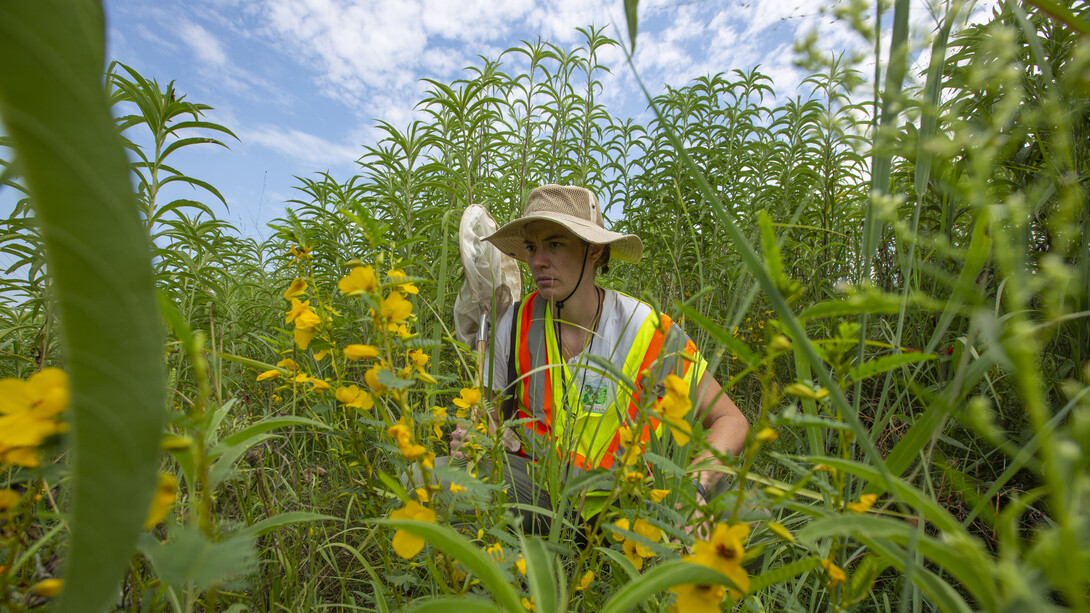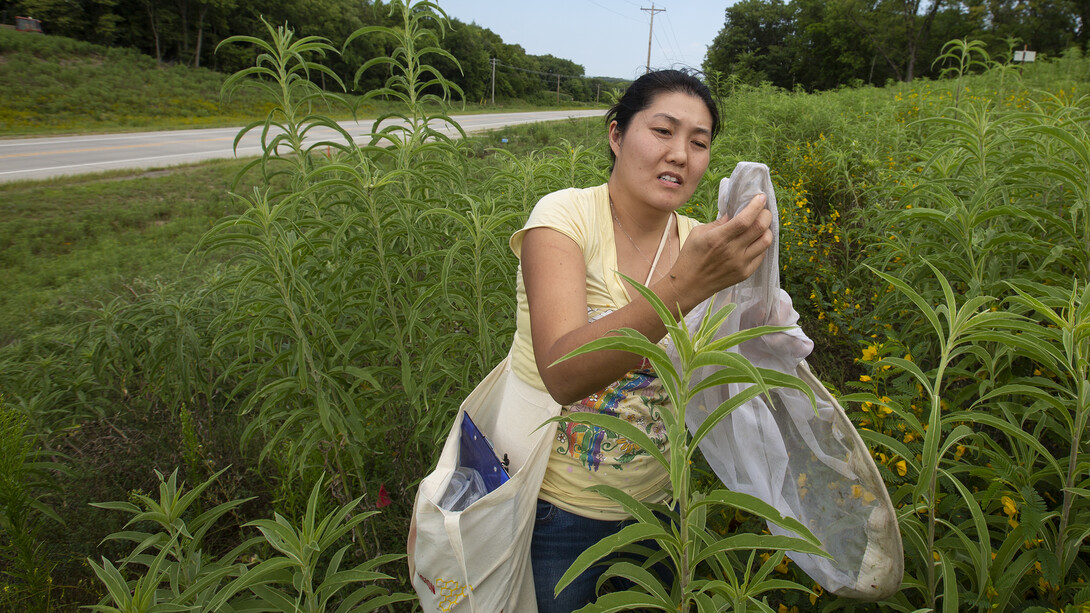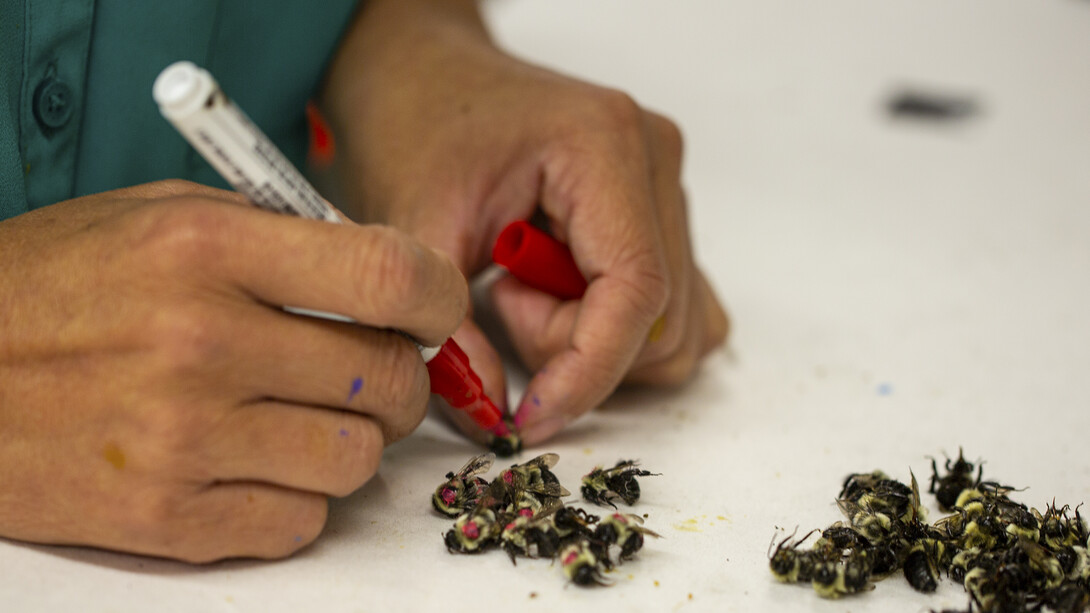
With a mid-morning summer swelter rising, researchers from the University of Nebraska–Lincoln Bee Lab count their quarry on the tailgate of a Husker-red pickup.

Fresh off a 30-minute search through waves of partridge pea blossoms and towering stands of not-yet-blooming sunflowers planted in roadside ditches near Union, the team gently examines plastic vials vibrating with the buzz of newly captured bumblebees.
“They’re foraging very low, so you have to really get down in there to find them,” said Judy Wu-Smart, assistant professor of entomology and director of the Nebraska Bee Lab. “They’re being especially tricky.”
Unaware of their importance, the perturbed pollinators are part of a second-year, Nebraska Department of Transportation-funded study led by Kayla Mollet, a graduate research assistant in entomology. The research goal: To convert the overgrown grunge of roadside plantings into a pollinator paradise.
“We are focused on creating best practices for establishing aesthetically-pleasing wildflower patches that can thrive along roadsides and expand resources available to pollinators,” Mollet said. “Our recommendations also need to be economical because seed can be expensive.”

In existing roadside plantings, the state regularly integrates wildflowers. However, fast-growing grasses often overpower young wildflowers. To offer bloomers a fighting chance, Mollet is studying the seed mix itself and how effectively the plants attract pollinators.
The project has established multiple wildflower “islands” along Highway 75 south of Union, Nebraska. Each of the research areas include four 120-square-foot plots planted with variations on two types of seed mixes — a standard blend of wildflower and grass seeds used by the state, and a 100 percent pollinator wildflower mix.
The pollinator wildflower mix is planted in three different patch sizes: 100 percent of a plot, 50 percent of a plot, and 25 percent of a plot. Those three patch sizes plus an area with the state’s standard seed blend make four islands per research area.
To ensure an unbiased result, patch sizes are randomly assigned to a research area. Two temporary bumblebee hives are placed at each research area. A specific color is assigned to each hive and bees within are painted with a single, corresponding spot.
The attractiveness of each planting area to pollinators is gauged by regular patrols from the research team. Armed with nets, the researches walk the plots, recording overall bee activity. They also track the painted bumblebees specifically, charting the total found and color represented.
“The bumblebee hives are there for a week at a time and we return multiple times to record the activity,” Mollet said. “The hives provide a controlled way in which we can identify foraging preferences in terms of flowers present and distance from the hive.”

The project also includes the placement of bee nesting traps which the team uses to track the variety of wild bees buzzing around Nebraska.
Both the roadside study and ongoing research into plantings in pivot corners in central and western Nebraska are helping advance Mollet’s thesis topic on the effectiveness of pollinator habitats on private and public lands.
“I love the idea that I’m out here every day helping the bees and that they are helping me,” Mollet said. “To me, there’s nothing better than being out here and serving as an advocate of nature.
“I hope my entire career is spent protecting pollinators and expanding the knowledge we have on what makes them thrive.”








